Vehicle Cover & Concealment
At RECOIL, we review every product fairly and without bias. Making a purchase through one of our links may earn us a small commission, and helps support independent gun reviews. Read our affiliate policy.
Find out more about how we test products.
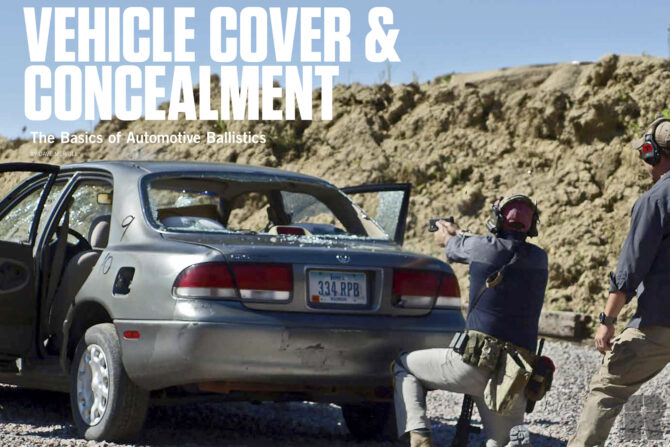
The Basics of Automotive Ballistics
Vehicle Close Quarter Battle (VCQB) was first developed by Will Petty of Centrifuge Training. The coursework in a VCQB class covers ballistics and gunfights in, out, and around vehicles and is targeted to law enforcement. While there was a time the concept was considered controversial, in the years since inception VCQB has been successfully employed real-time by law enforcement officers being engaged with gunfire.
Now, VCQB tactics are in current use with the FBI, Canada’s RCMP, Texas’ Department of Public Safety, the NYPD, the U.S. Marshals Service, and more.
VEHICLE COVER
The basic definition of concealment is something that hides your position but can be shot through, like a large piece of posterboard, and cover is something that’ll stop bullets like a piece of armor. But the reality is that most of the time you don’t know what “cover” is until you try to put some bullets through it.
What is considered “cover” for one caliber may not be for another. The fact is there are extremely few “bulletproof” items, but instead objects that can stop projectiles for a given period of time (given infinite time and ammunition, a .22LR will eventually burn through 10 feet of concrete).
What’s been traditionally taught about vehicles is that the only real cover is the engine block and the tires. Indeed, most rounds will punch right through side panels and doors, hitting the occupants unless a round goes awry after hitting something like a door lock or other internal mechanisms. And furthermore, due to the materials used, modern engine blocks may not be as bulletproof as they have been in the past.
Unless additional armor is used, the doors can only be relied on for concealment. But modern vehicles have other reinforced areas that were otherwise ignored: pillars.
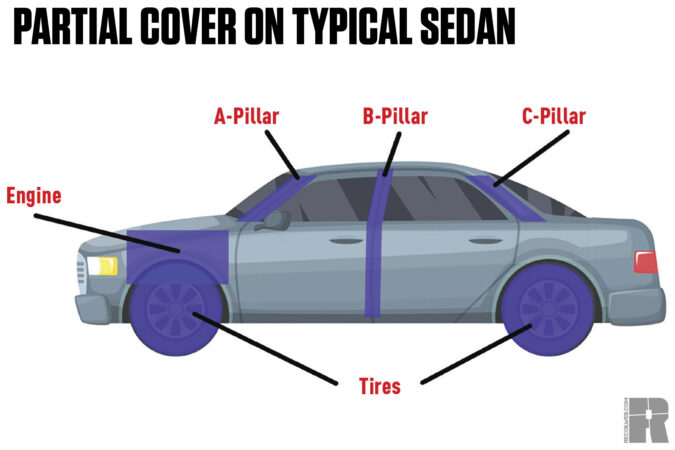
Pillars are vertical and inclined components that not only support the roof of a vehicle, but also are structural reinforcements that protect the passengers in case of an accident or rollover. Most sedans have at least three pairs of these pillars, with larger vehicles like SUVs and station wagons often having four. Pillars are labeled front-to-back with the letters A through D.
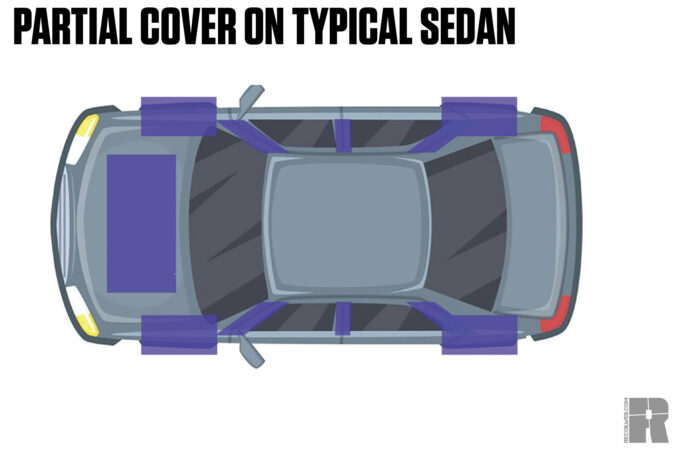
As vehicle safety standards increase, so has the strength of these structural pillars. So strong, in fact, that they can stop a whole lot of bullets. At one VCQB course we attended, a 5.56mm round from an AR-15 handily went through all of the doors but it took 17 shots within a condensed area to penetrate a single pillar.
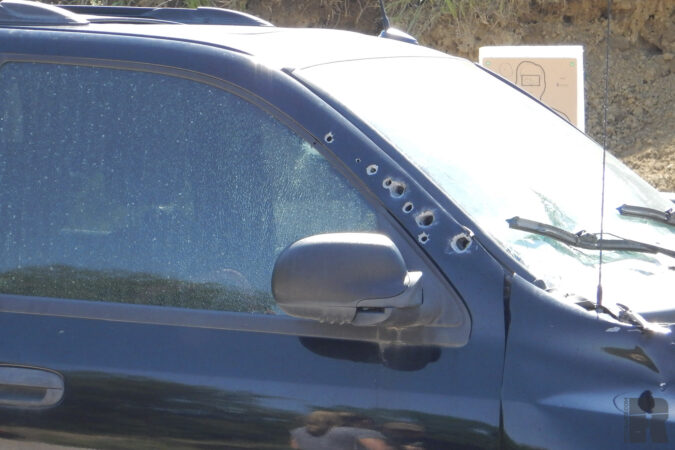
But the pillars themselves aren’t terribly wide, something you can see for yourself the next time you enter a vehicle. Additionally, neither pillars nor engine blocks and tires extend all the way to the ground or all the way up into space. Vehicles are 3D objects in a 3D environment, not merely 2D targets on a flat range, and have to be treated as such.
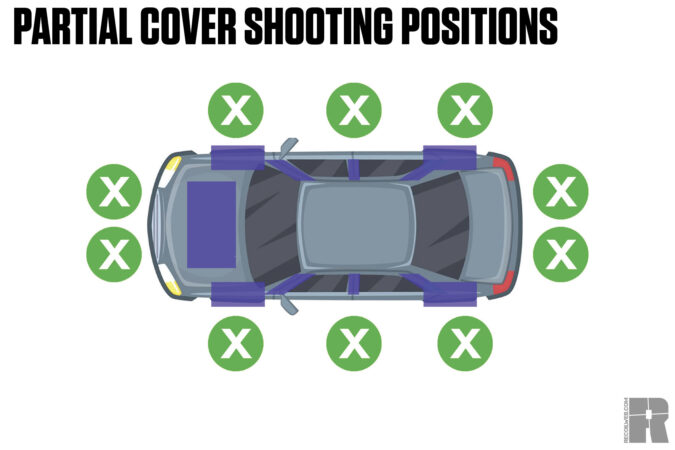
While some protection is better than no protection, you can increase this bullet-resistant-advantage by stacking as many parts and pillars as possible between you and whomever is shooting at you. As such, much of VCQB is a movement and positional shooting class.
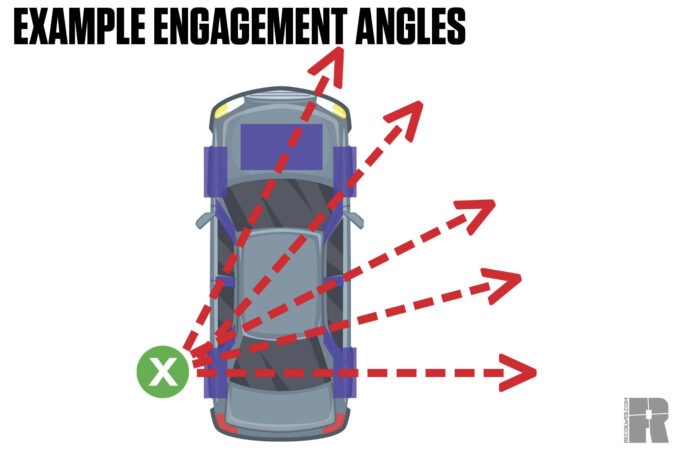
You have to be able to successfully shoot in, over, under, and around vehicles if you want to maximize your survivability.
The graphics provided are very general on purpose, as you’re around several different vehicles through the normal course of your day. If you keep these factors in mind, and importantly, practice the concept, it can be extremely useful information.
SHOOTING THROUGH GLASS
Bullets can get weird when traveling through barriers, and glass can be particularly tricky. Even though you can see through it just fine, the projectile fired will typically exit perpendicular to the angle of the glass itself. This effect is especially pronounced when firing through the laminated glass of a windshield.
This change in trajectory happens because when a bullet doesn’t hit square, one part strikes the barrier first causing a shift. These deflections can be extreme enough to be the difference between a hit and a miss, even at close range. For car windshields, if you’re firing outside-in you can expect the shot to travel downward. If you’re firing from inside-out, they’ll deflect upward.
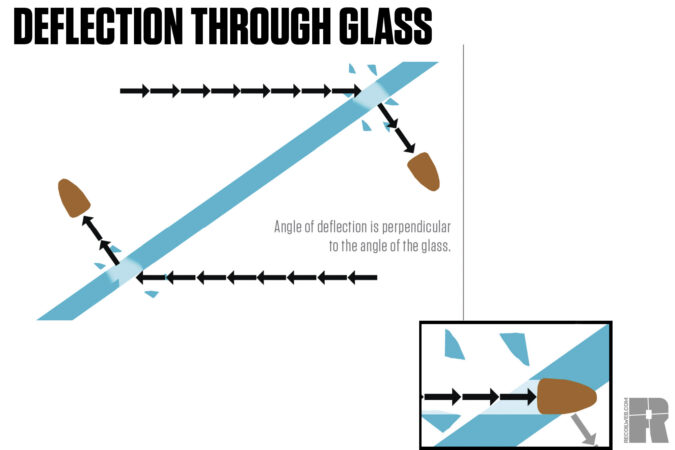
To manage it, you can either adjust before the shot or simply fire more than one round. The first projectile not only breaks the glass itself but plows a little window through it. Successive rounds in the same place will not deflect to the same degree; the usual advice is to shoot more than once.
Glass causes other weirdness too, like causing the outer copper jacket of the projectile to shed as it passes through. Assorted calibers and loads can all act a bit differently through glass, but bonded bullets tend to stay together better. A decade ago when the FBI and U.S. Marshals switched to 9mm, they took considerable time testing different loads through automotive glass. The Hornady 135-grain Critical Duty +P excelled when fired through barriers, with minimal deflection while maintaining mass.
Why you can trust RECOIL
Since our founding in 2012, RECOIL remains the premier firearms lifestyle publication for the modern shooting enthusiast. We deliver cutting-edge coverage of guns, gear, accessories and technology. We go beyond basic reviews, providing no B.S. buyer’s guides, hands-on testing and expert analysis on everything from firearms and survival equipment to watches and vehicles.
Our reviewers are the backbone of our operation and come from diverse shooting backgrounds: Former law enforcement, military veterans, competitive shooters, seasoned hunters and plain old firearms enthusiasts. Furthermore, we’re not just gun experts, but dedicated journalists who adhere to the strictest standards of our profession.
At RECOIL, editorial independence is the foundation of everything we publish and the cornerstone of reader trust. Our editors, writers and content creators make all editorial decisions independently, free from outside influence. That boils down to: advertisers don’t dictate our coverage, the outcomes of our reviews or what we recommend in our buyer’s guides. First and always, our commitment is to our audience—ensuring every review and article is accurate, unbiased, and driven by real-world experience.
Whether you’re selecting your next firearm, upgrading your gear, or exploring the latest innovations in the shooting world, RECOIL provides the trusted insights you need to make informed decisions. Learn more about our Editorial Standards and how we review products.
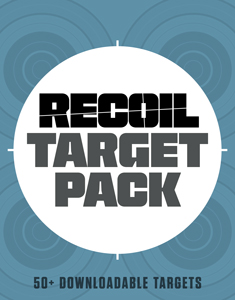
NEXT STEP: Download Your Free Target Pack from RECOIL
For years, RECOIL magazine has treated its readers to a full-size (sometimes full color!) shooting target tucked into each big issue. Now we've compiled over 50 of our most popular targets into this one digital PDF download. From handgun drills to AR-15 practice, these 50+ targets have you covered. Print off as many as you like (ammo not included).Get your pack of 50 Print-at-Home targets when you subscribe to the RECOIL email newsletter. We'll send you weekly updates on guns, gear, industry news, and special offers from leading manufacturers - your guide to the firearms lifestyle.
You want this. Trust Us.
1 Comment
Add a comment
View Comments
-
All good info. That said, your femoral artery, upper part of your leg, is exposed in the photo shooting around the rear of the car. You should be down on the left knee exposing from the knee cap down, on your right leg. You can take an impact there and still be in the fight. Good info for everyone on the pillars. Gunsite teaches one pillar will stop a 9mm, stack two pillars to stop a 556.


All good info. That said, your femoral artery, upper part of your leg, is exposed in the photo shooting around the rear of the car. You should be down on the left knee exposing from the knee cap down, on your right leg. You can take an impact there and still be in the fight. Good info for everyone on the pillars. Gunsite teaches one pillar will stop a 9mm, stack two pillars to stop a 556.